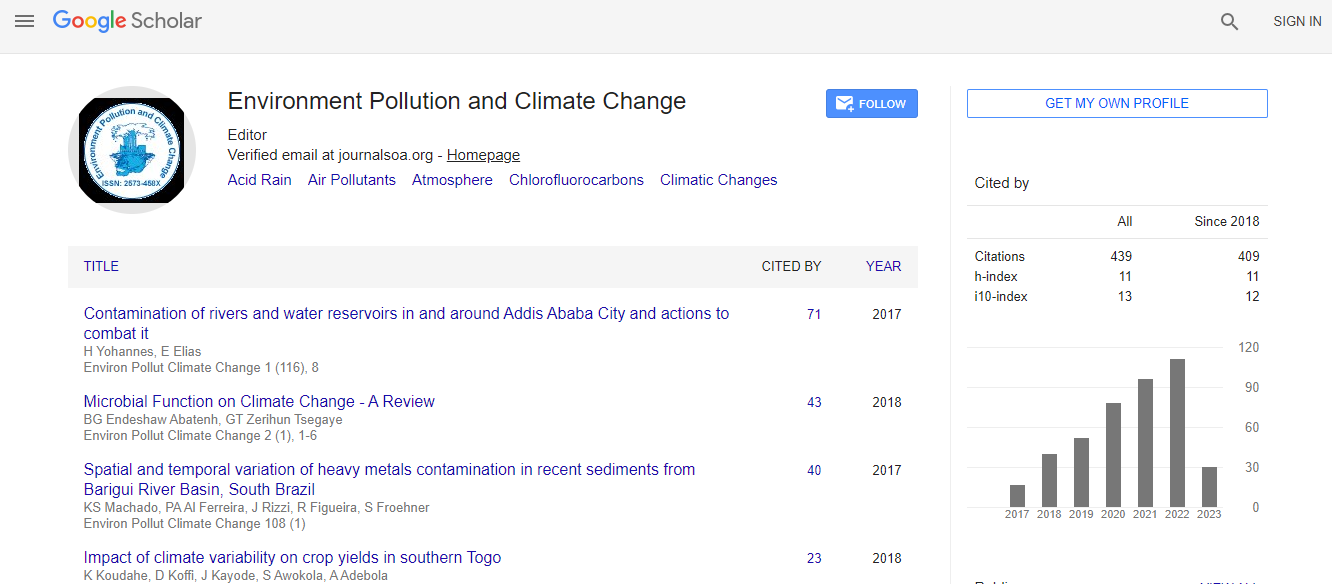Research Article
Distribution and Characterization of Sex Hormones in Sediment and Removal Estimate by Sewage Treatment Plant in South Brazil
Karina Scurupa Machado1*, Julio Cesar R Azevedo1, Maria Cristina Borba Braga1, Paulo AL Ferreira2and Rubens Figueira21Department of Hydraulics and Sanitation, Federal University of Parana, Curitiba-PR, 81531-980, Brazil
2Oceanographic Institute, University of São Paulo, Oceanographic Square, 191, São Paulo-SP, 05508-120, Brazil
- *Corresponding Author:
- Karina Scurupa Machado
Department of Production Engineering
Federal University of Parana, Curitiba-PR, Brazil
81531-980
Tel: +55 41 995115715
E-mail: ksmachado@hotmail.com
Received date: February 10, 2016; Accepted date: March 21, 2017; Published date: March 28, 2017
Citation: Machado KS, Azevedo JCR, Braga MCB, Ferreira PAL, Figueira R (2017) Distribution and Characterization of Sex Hormones in Sediment and Removal Estimate by Sewage Treatment Plant in South Brazil. Environ Pollut Climate Change 1:115.
Copyright: © 2017 Machado KS, et al. This is an open-access article distributed under the terms of the Creative Commons Attribution License, which permits unrestricted use, distribution, and reproduction in any medium, provided the original author and source are credited.
Abstract
Sex hormones are a group of endocrine disruptors excreted by humans and animals. These compounds have been detected in surface waters and sewage treatment plant (STP), all over the word. Due their physicochemical properties significant amount is deposited in the sediment of surface waters acting as reservoirs able to contaminate the water column. Although these compounds have origin in different sources, it is widely accepted that the main source of these contaminants is STP effluents. Despite toxicity and high input of this compound in the aquatic systems, little information is available on their concentration in the sediment and how these compounds are distributed in the environment. In this study, natural and synthetic female sex hormones (estrone - E1, 17β-estradiol - E2, 17α-Ethinylestradiol – EE and progesterone - PG) were monitored in the sediment of three rivers from the Iguaçu river basin, South Brazil. Also, a removal estimate of these compounds by the local STP was performed. The results showed significant concentrations of hormones, mainly E2, in the sediment samples and an inefficient removal by the STP, resulting in some cases, in the increasing of estrogens. An assessment of the sediment-water partition coefficient (Kd) showed high mobility in the environment for the estrogens, in contrast to the higher affinity for the sediment of the progesterone.

 Spanish
Spanish  Chinese
Chinese  Russian
Russian  German
German  French
French  Japanese
Japanese  Portuguese
Portuguese  Hindi
Hindi 
